Pinnacle Moments in NFL History

Pinnacle Moments in NFL History

The 1958 NFL Championship game, the first NFL playoff game to go into sudden-death overtime, is considered the Greatest Game Ever Played. Widely broadcast on NBC, it launched the game to new levels of popularity. Overall, 17 Hall of Fame players took the field that day. (Send comments to siwriters@simail.com)
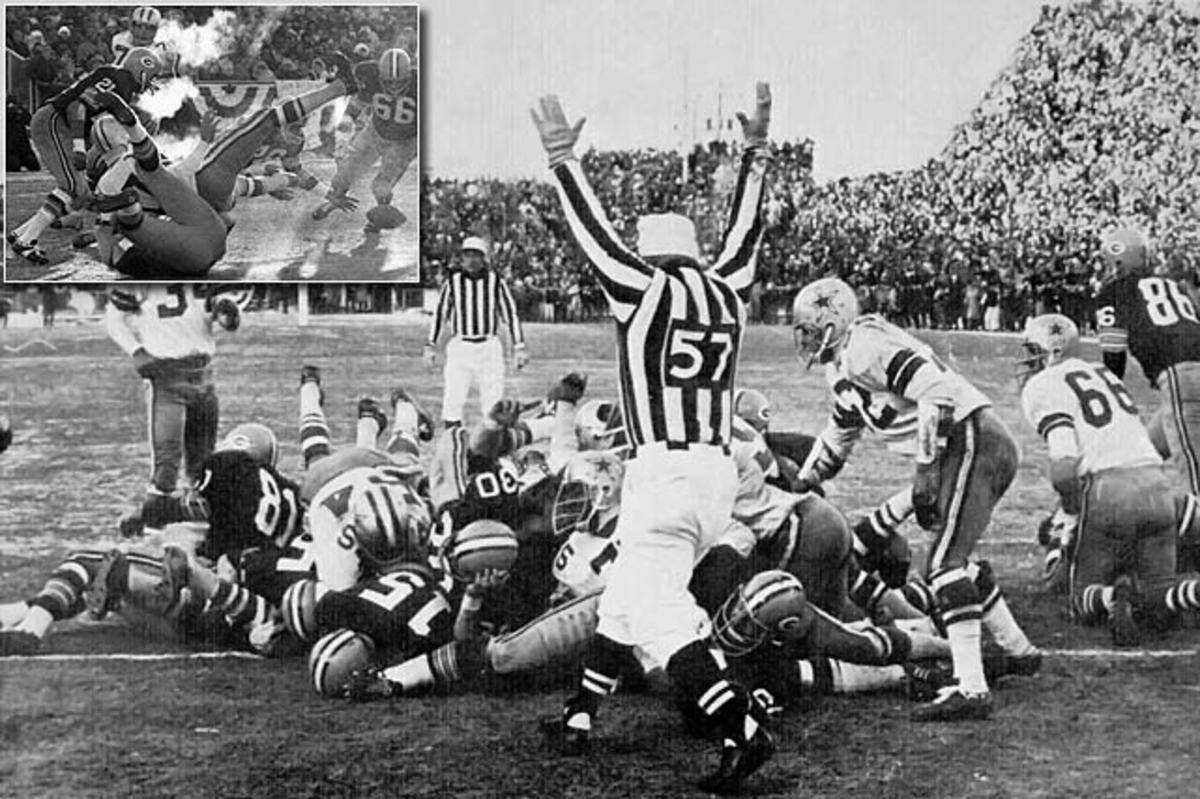
The coldest NFL game on record (13 degrees below zero; 48 degrees below zero with the wind chill) transformed Lambeau Field into a frozen tundra and gave many a player frostbite in 1967. The game featured 14 future Hall of Famers, a thrilling ending and marked the last time that the NFL Championship game was considered more important than the Super Bowl.

If a football game ends in a stadium and no one can watch it, did it really end at all? Many fans asked this same question when, in 1968, NBC terminated the broadcast of a Jets-Raiders game early to air Heidi , a made-for-TV movie. Fans and NBC executives alike erupted in outrage, and it led the NFL to amend its television policies, requiring games in home markets to be broadcast in their entirety.

After the AFC was blown out in the first two Super Bowls, writers and pundits alike were skeptical the league was worthy of merging with the NFL. And then came Broadway Joe Namath and the New York Jets of the AFL. Namath guaranteed that his Jets would upset the heavily-favored Baltimore Colts, and the rest is history.

One of the greatest and most controversial plays in NFL history, the Immaculate Reception occurred during a 1972 AFC divisional playoffs game between the Oakland Raiders and the Pittsburgh Steelers. Trailing 7-6, facing a fourth-and-10 with only 1:17 left to play, Terry Bradshaw launched a pass toward John Fuqua. The ball bounced -- off who is still disputed -- and tumbled, end over end into the hands of Franco Harris. So many aspects of the play are controversial to this day, but what can't be debated is that the play launched Harris and the Steelers to greatness.
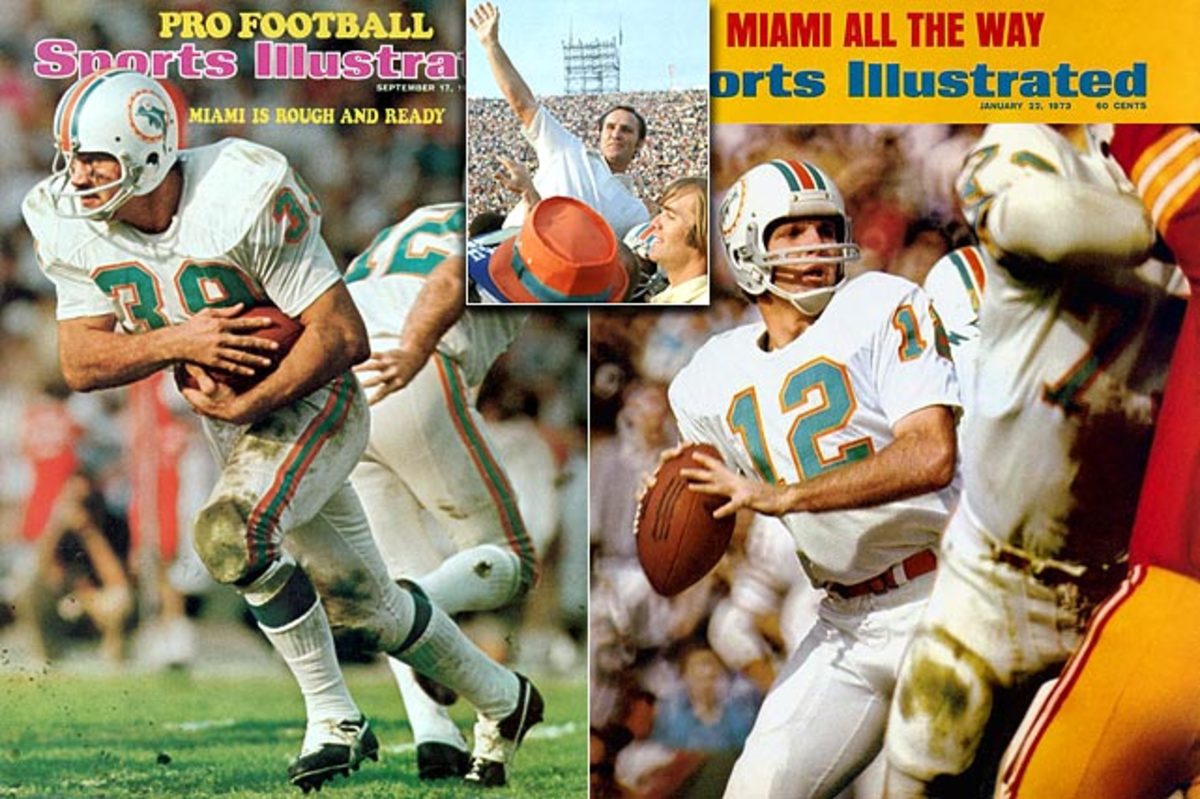
Perfection. No other team, apart from the 1972 Miami Dolphins, can lay claim to it. Led by the legendary Don Shula, and Hall of Famers such as Bob Griese, Larry Csonka, Larry Little and Paul Warfield, the Dolphins marched through the NFL in '72 with a spotless 17-0 record and a Super Bowl title. It's rumored that the perfect Dolphins get together to sip champagne every time another team's run at NFL perfection ends.
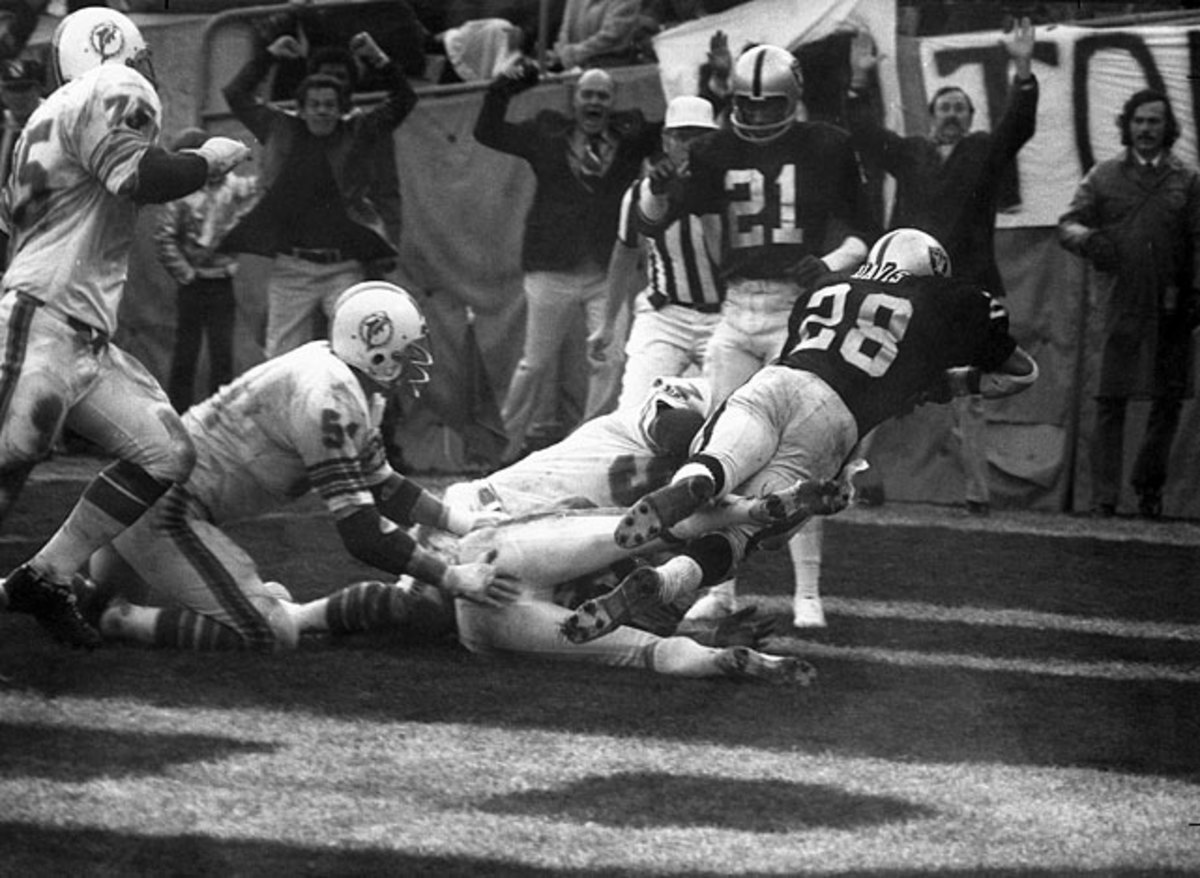
With only 24 seconds left in a 1974 AFC divisional playoff game, Raiders running back Clarence Davis somehow managed to catch the game-winning touchdown amid a sea of Dolphin defenders' hands. It's one of the few iconic NFL plays of which the Raiders were the beneficiary.

In the closing seconds of a 1975 NFC divisional playoff game, the Cowboys and Roger Staubach found themselves down 14-10, at midfield with 24 seconds left. Previously, the last-ditch desperation heave had been known as an "Alley-Oop." But when Staubach heaved the ball in wideout Drew Pearson's direction, he closed his eyes and said a Hail Mary. Pearson came down with the ball, and the rest is history.
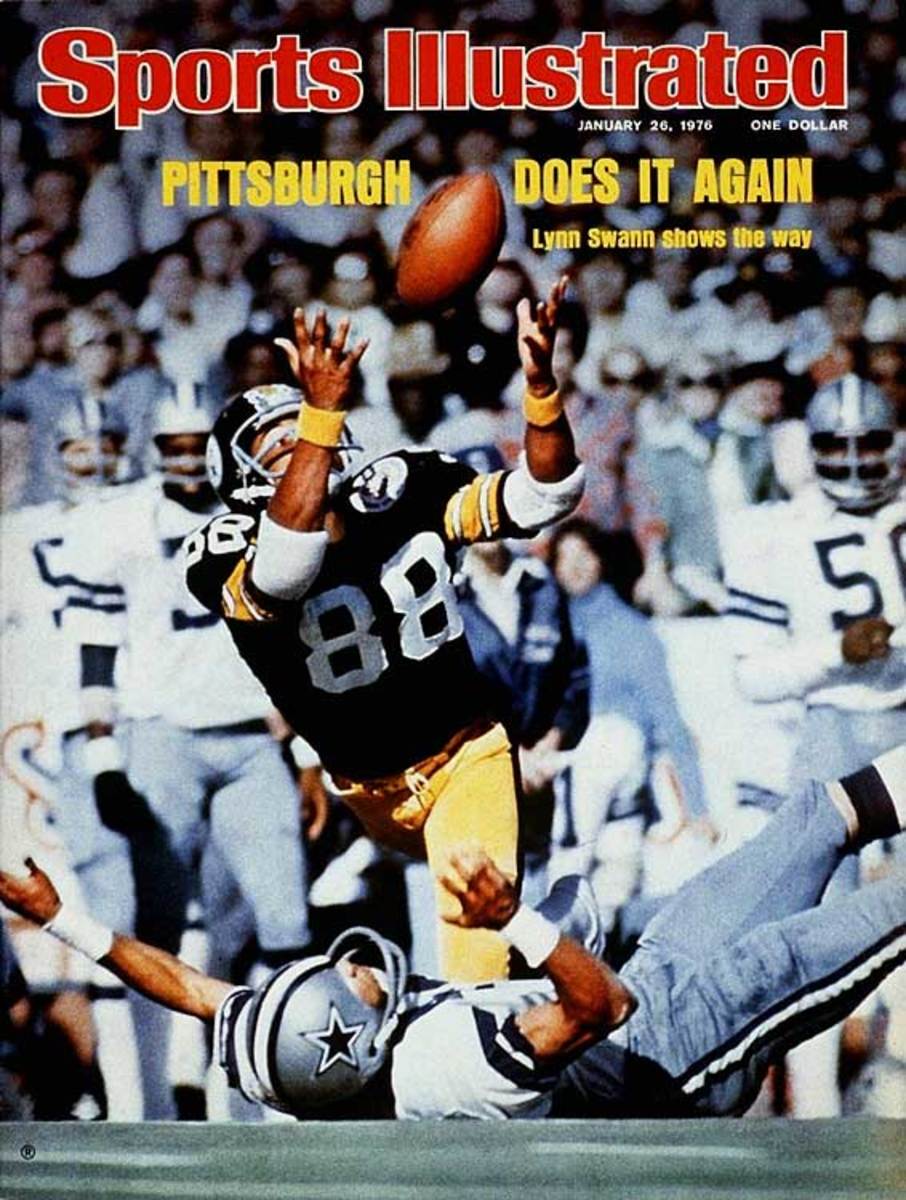
After Lynn Swann suffered a severe concussion in the AFC Championship Game, few in the Steel City expected him to play in Super Bowl X. Not only did he play, but also he won Super Bowl MVP. Swann's most iconic play of that Super Bowl came on a 53-yard pass from Terry Bradshaw when Swann stumbled over a defender and managed to catch the ball. Compared to more recent impressive Super Bowl catches, Swann is humble, giving credit to both Santonio Holmes and David Tyree in an interview with the New York Daily News .

With 10 seconds left in a 1978 matchup between the Oakland Raiders and San Diego Chargers, the Raiders trailed 20-14. Ken Stabler took the snap and fumbled the ball forward toward the San Diego goal line. A slew of other Raiders players also batted and kicked the ball forward until tight end Dave Casper fell on the ball in the end zone. All in all, the ball had advanced 24 yards without the aid of a forward pass or run, and the Raiders emerged victorious, 21-20. At the time, officials were not able to overturn the call, but the play lead to an overhaul of the league's rules regarding fumbles.

One of the few non-playoff games included on this list, The Miracle at the Meadowlands -- known simply as The Fumble in New York -- saw the Giants lose in the closing seconds of a 1978 regular season game simply because they couldn't kneel. Up 17-12 over the Eagles, quarterback Joe Pisarcik only had to kneel to preserve a Giants victory. Offensive coordinator Bob Gibson however, called a run, and when Pisarcik tried to hand the ball to running back Larry Csonka, the ball came loose and Herman Edwards scooped it up and ran for a touchdown and the victory. In its aftermath, kneeling on the ball was legitimized league-wide.
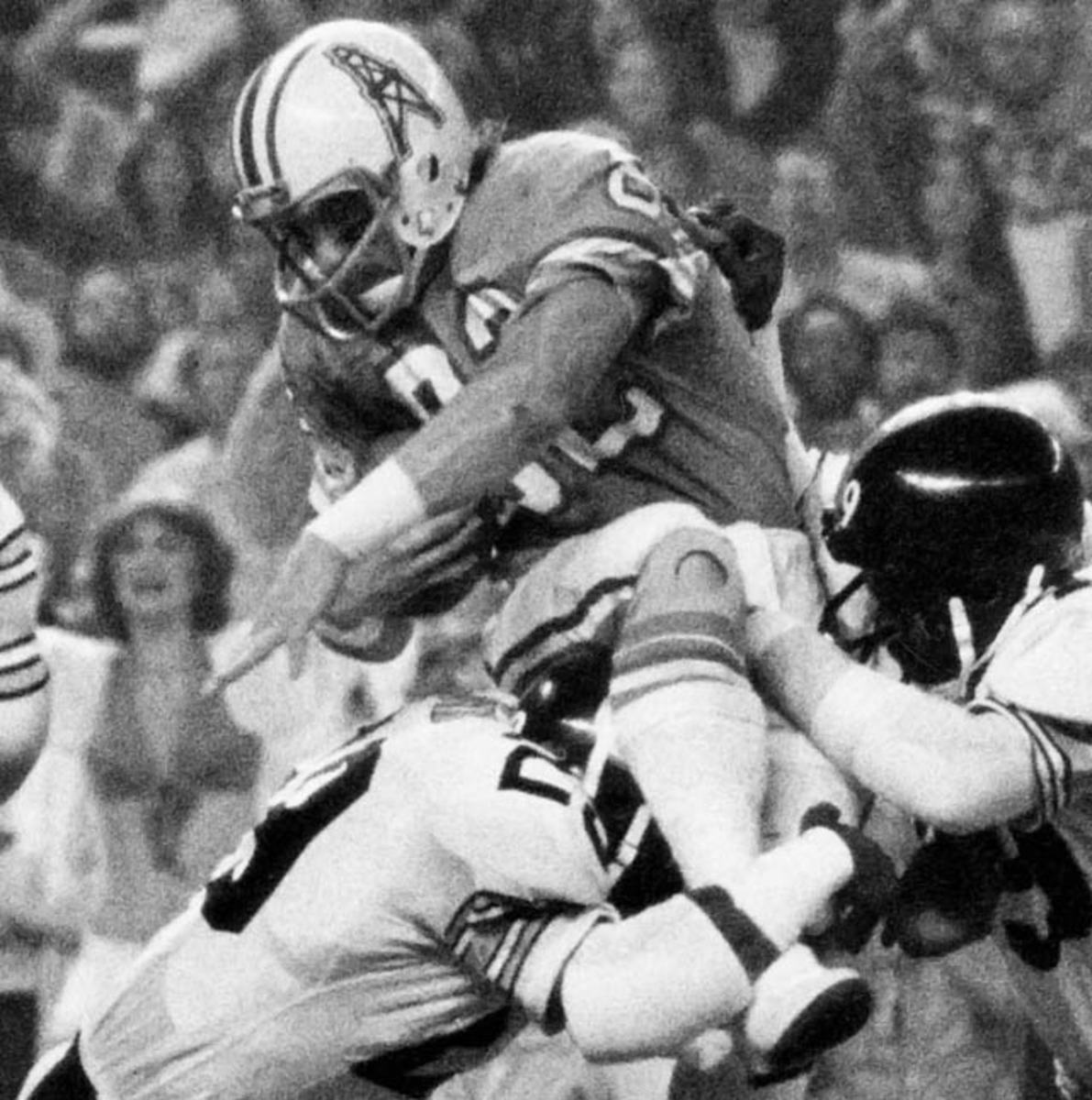
The NFL's annals are lined with missed calls, but no non-call was more erroneous than the one in the 1979 AFC Championship Game. Down 17-10 in the third quarter to the Pittsburgh Steelers, the Houston Oilers mounted a comeback that would have shifted the momentum squarely in their favor. Oilers quarterback Dan Pastorini hit Mike Renfro in the back of the end zone for what appeared to be the game-tying score. Renfro was ruled out, even though TV replays clearly showed he was inbounds. The Oilers protested in vain and lost the game, but the case for instant replay was all but cemented.
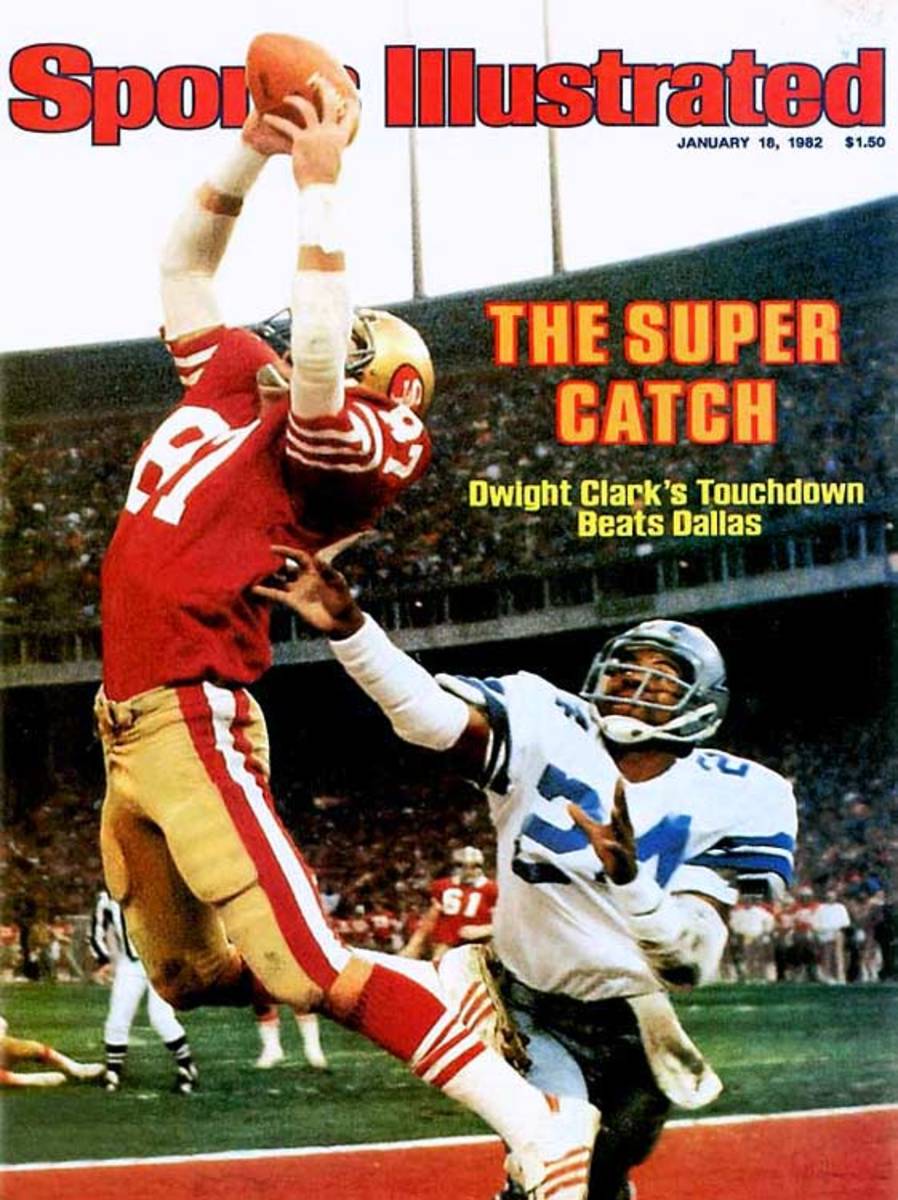
Did Joe Montana mean to throw the ball away? With 51 seconds remaining in the 1982 NFC Championship Game, the 49ers were trailing 27-21. Montana took the snap, scrambled toward the sideline and launched a pass that seemed certain for the stands. Dwight Clark however, leaped and managed to get his fingertips on the ball. The catch and subsequent victory was a watershed moment for both teams: the 49ers went on to make the playoffs eight out of the next 10 years; the Cowboys didn't make another Super Bowl in the '80s.
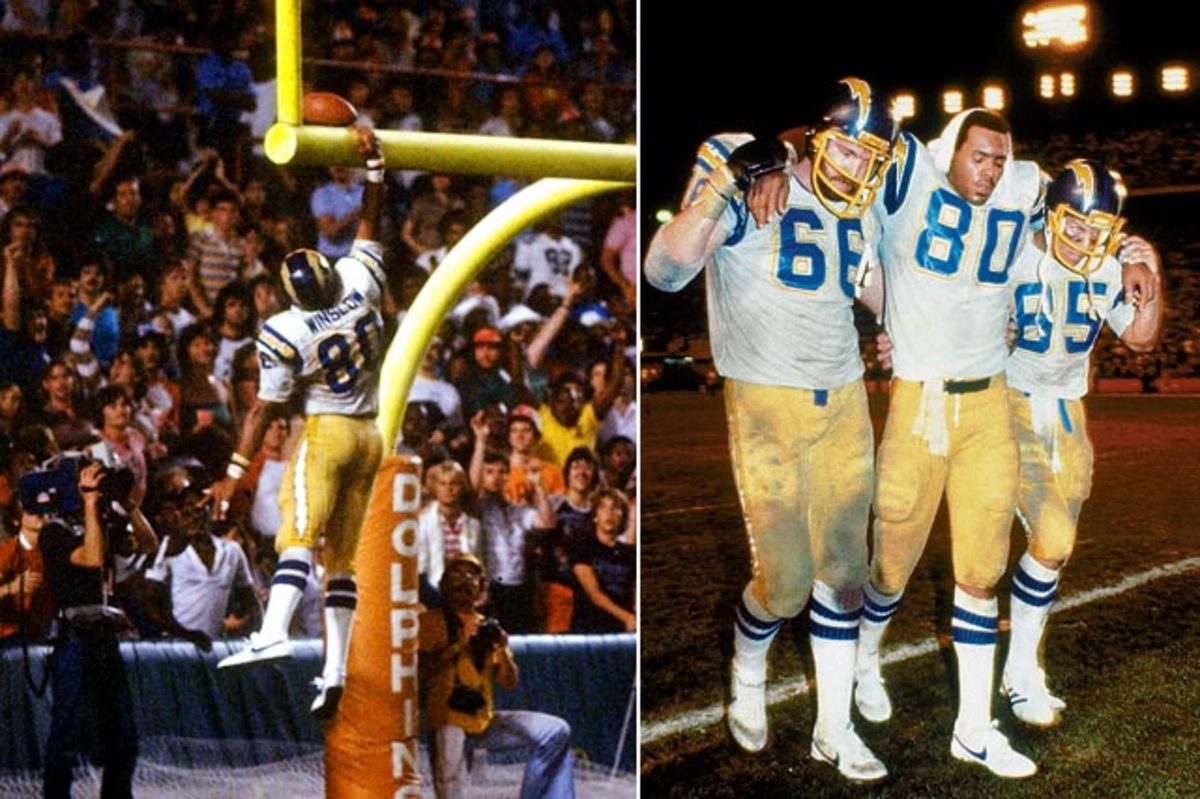
The Epic in Miami goes by many names. The Miami Herald called it "The Miracle That Died." while Sports Illustrated dubbed it "The Game No One Should Have Lost." Whatever you call the 1982 AFC divisional playoff game between the San Diego Chargers and Miami Dolphins, it was a classic. The game set the record for points scored in a playoff game, and the most combined total and passing yards. No one embodied this game more than Kellen Winslow, who set a playoff record with 13 receptions for 166 yards, and countless injuries. When the Chargers finally emerged victorious, Winslow was so spent he had to be helped off the field by teammates.
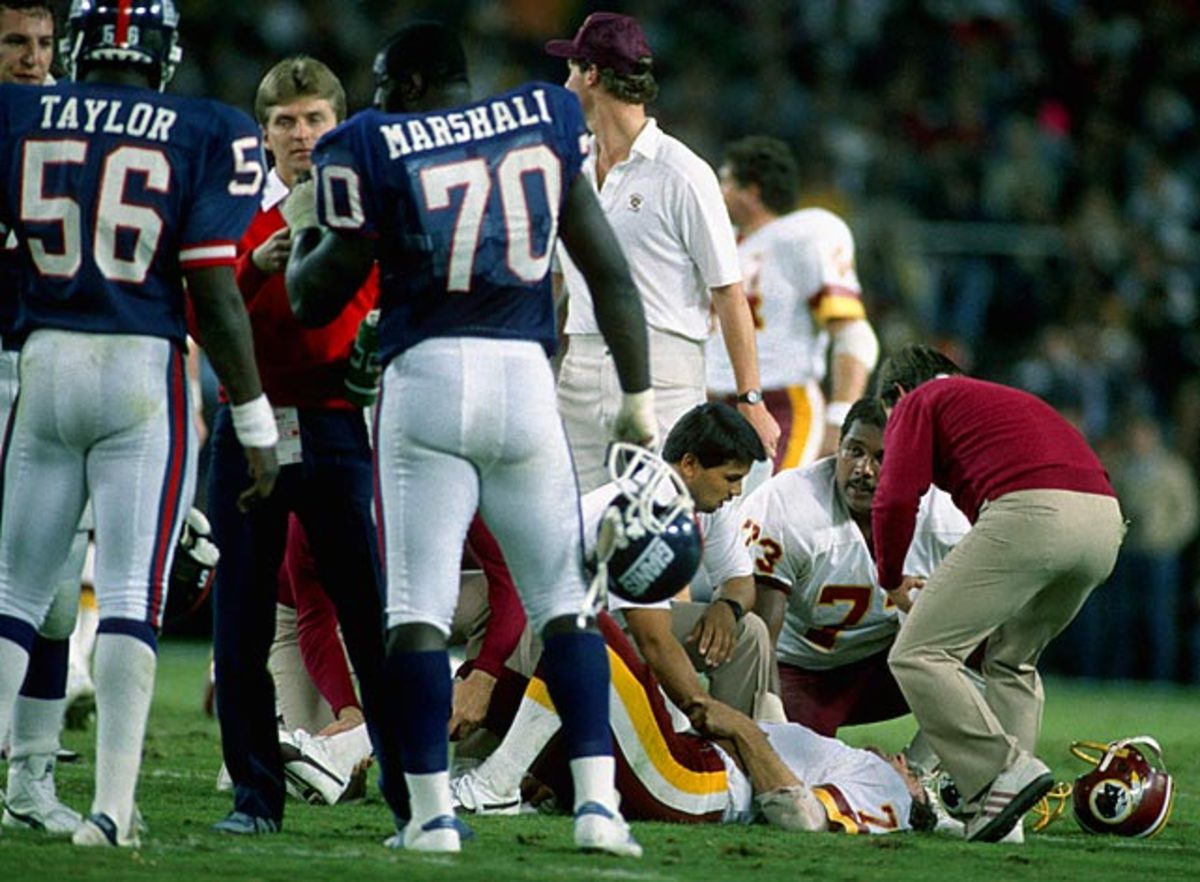
Injuries are commonplace in the NFL. But what made Lawrence Taylor's hit on Joe Theismann so significant was the graphic, shocking nature of it served as a reminder of the cost of playing such a violent game. In 1985, during a "Monday Night Football" game, Taylor sacked Theismann and immediately knew something was wrong. Taylor signaled to the sideline. Theismann had suffered a compound fracture to his right leg; he would never play another down in the NFL.
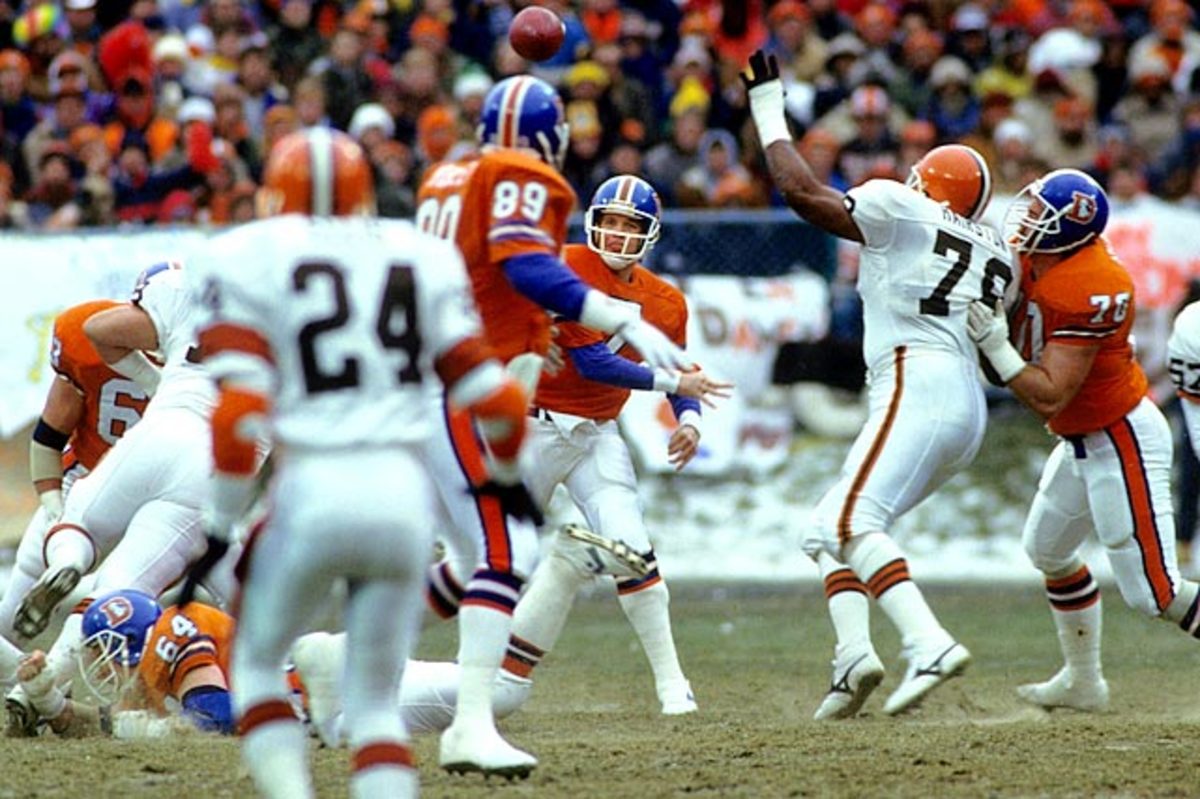
The two-minute drill is the measure by which all quarterbacks are judged. It is a test of precision, time management and performance in the clutch. While it took Elway five minutes and two seconds to complete The Drive, he displayed all those attributes and then some as he marched his Denver Broncos 98 yards down the field to tie the AFC Championship Game in 1987. The Broncos eventually went on to win the game and advance to Super Bowl XXI, where they lost to the New York Giants.

During the Fog Bowl, a NFC divisional playoff game in 1988, no one won. In the second quarter, a heavy, dense fog rolled over Soldier Field, limiting the vision of both the fans and the players. Play continued, but players from both the Philadelphia Eagles and the Chicago Bears complained that they had trouble seeing the first-down markers. Eagles quarterback Randall Cunningham had a career day with 407 passing yards, but, perhaps because he couldn't see it, was unable to find the end zone. Though no one saw it, the Bears were victorious 20-12.

The first of four consecutive Super Bowl losses for the Bills came on an errant field goal attempt by kicker Scott Norwood. Trailing the New York Giants by a single point in the closing seconds of Super Bowl XXV, the Bills turned to Norwood to win the game. It had the distance, but Norwood had unfortunately hooked it wide right.

Down 24-21 to the New York Jets with only 22 seconds left in a November 1994 game, the Dolphins and Dan Marino ran to the line of scrimmage screaming, "Clock! Clock!" The Jets defense, anticipating a spike, let their guard down. Seeing a window of opportunity, Marino faked a spike and threw to Mark Ingram, who was wide open in the end zone as a result. The Dolphins' victory marked Marino's 29th comeback and his fifth against the Jets.

There are few plays more exciting in football than a kick return for a touchdown. When said kick return includes a handoff and a lateral with only 16 seconds left in the game, there isn't a more exciting play. Down 16-15 to the Buffalo Bills in the AFC wild card game in 2000, the Titans' Frank Wycheck planted and threw a lateral across the field to Kevin Dyson, who ran 75 yards for the score and the win. Officials reviewed the play, but even they could not deny what would be dubbed the Music City Miracle.
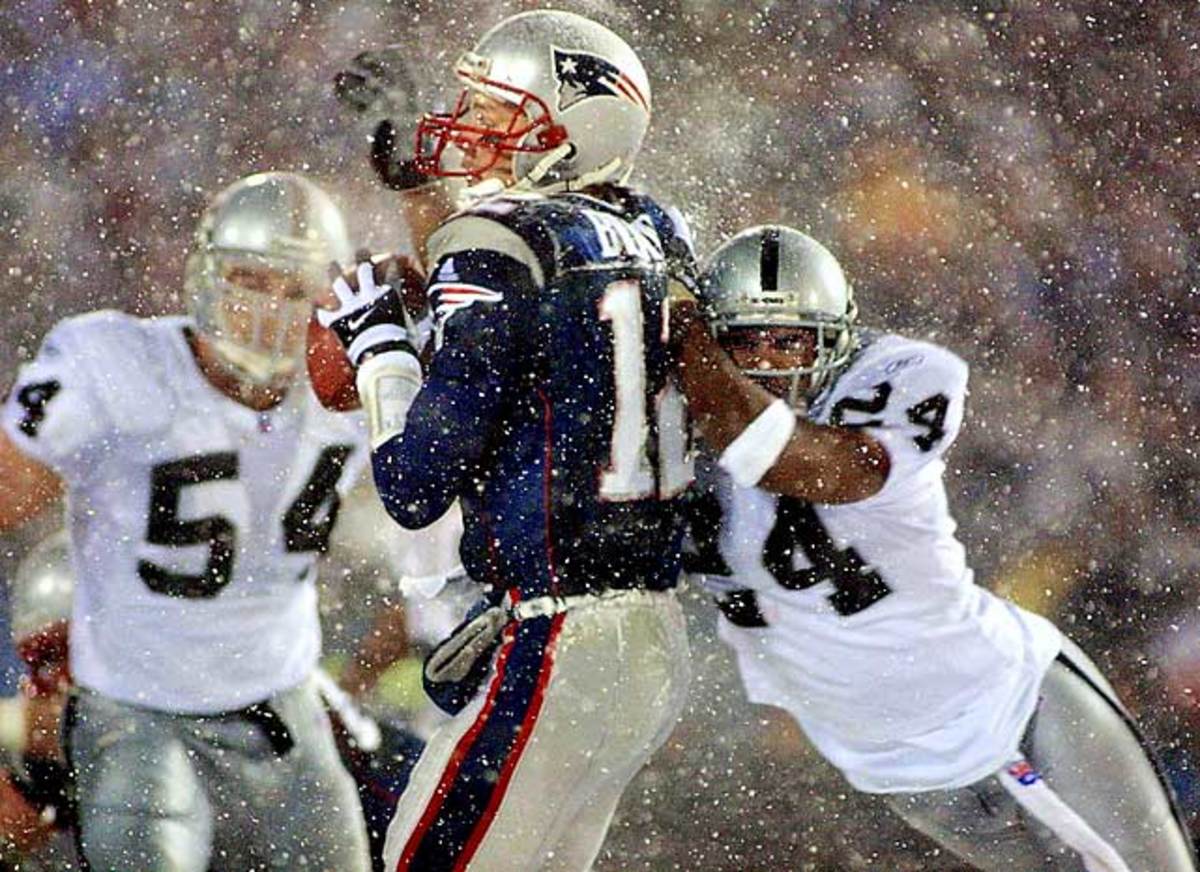
Though Tom Brady's a Bay Area native, the Tuck Rule game all but guaranteed he can't set foot in Oakland. With two minutes left to play, the Patriots were down 13-10 to the Raiders. Amid blizzard-like conditions, Brady dropped back and was sacked by Charles Woodson, who jarred the ball loose from Brady's grasp. The Raiders recovered, only to have the fumble overturned by an official replay citing Brady's forward motion. By the letter of the NFL law it may not have been a fumble, but for everyone outside of New England, it sure looked like one.

With six seconds left in Super Bowl XXXIV, Steve McNair found Kevin Dyson on a slant. Dyson, sprinting upfield, represented the Titans' final chance to tie the game. He fell one-yard short, however, when St. Louis Rams linebacker Mike Jones made a clutch tackle to preserve the victory.

The pass should not have even happened. Facing a suffocating pass rush, Giants quarterback Eli Manning managed to duck, dodge and launch a Hail Mary pass that carried with it the waning hopes of a Giants victory in Super Bowl XLII. Continuing the improbable, little-used wideout David Tyree leaped and came down with the ball, despite being blanketed by safety Rodney Harrison. True to form, the improbable events led to an improbable upset of the then undefeated Patriots.

How's this for redemption? With the Pittsburgh Steelers behind 23-20 to the Arizona Cardinals in Super Bowl XLIII, Santonio Holmes let the game-winning touchdown slip through his hands. One play later, with 35 seconds left in the game, the Steelers went right back to Holmes, who stretched, caught the ball and somehow managed to drag his tiptoes in bounds.

Five years after Hurricane Katrina touched down off the coast of New Orleans, the New Orleans Saints found themselves in the Super Bowl. After scoring a touchdown in the fourth quarter to go up 24-17 over the Indianapolis Colts, the Saints were being picked apart by Peyton Manning. Manning's one errant throw, however, ended up in the hands of Saints cornerback Tracy Porter, whose 74-yard return brought the whole French Quarter to its feet. (Send comments to siwriters@simail.com)
